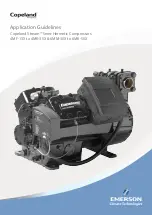
When using this tool to perform work-related activities, the operator may
experience discomfort in the hands, arms, shoulders, neck, or other parts of the
body.
When using this tool, the operator must assume a comfortable posture while
maintaining a safe posture and avoiding awkward or off-balance postures. The
operator must change posture during extended tasks; this can help prevent
discomfort and fatigue.
If the operator experiences symptoms such as persistent or recurring discomfort,
pain, throbbing, aching, tingling, numbness, burning sensation, or stiffness, these
warning signs should not be ignored. The operator should consult a qualified
health professional.
-
-
-
8
AIR COMPRESSORS
TOOL SAFETY
Repetitive Motion Hazards
Disconnect the tool from the power supply before installing or changing the
inserted tool or accessory.
Avoid direct contact with the inserted tool during and after use as it may be hot or
sharp.
Use only sizes and types of accessories and consumables recommended by the
manufacturer of this tool; do not use other types or sizes of accessories or
consumables.
-
-
-
Danger accessories
Slips, trips and falls are the leading causes of injuries in the workplace. Be aware
of slippery surfaces caused by tool use as well as trip hazards caused by the air
line or hydraulic hose.
This tool is not designed for use in potentially explosive atmospheres and is not
isolated from contact with electrical energy.
-
-
Workplace hazards
Dust and fumes generated from using this tool can cause health problems (for
example, cancer, birth defects, asthma, and/or dermatitis); Risk assessment and
implementation of appropriate controls for these risks are essential.
The risk assessment must include the dust created by the use of the tool and the
possibility of disturbing existing dust.
Direct exhaust to minimize dust disturbance in a dusty environment.
-
-
-
Dust and smoke hazards







































